The formula for a high performing (digital) team: Eight factors of team effectiveness
What factors result in a “high performing team”? Is there some formula we can all follow, or does it happen by chance? For both study and work, I set out to find some answers…
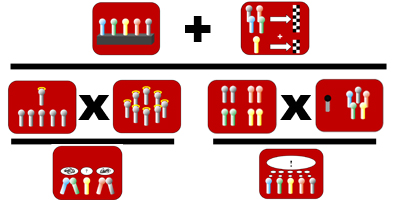
The formula for a “high performance team” is not as easy to find as it may seem. A search for “team performance” returns over 1,200 books on Amazon, 1.25 million results in Google Books, and countless journal articles.
Surely, I thought, a magic formula must exist within this mountain of literature. The answer is “yes”, but the complexity of such a formula makes it less than user-friendly.
A common question
I am not the only one with such questions. Mickan and Rodger identified eighteen characteristics of an effective team based on areas of influence.
| Organisational structure | Individual contribution | Team processes |
| Clear purposeAppropriate cultureDistinct rolesSuitable leadershipRelevant members
Adequate resources |
Self knowledgeTrustCommitmentFlexibility | CoordinationCommunicationCohesionDecision makingConflict management
Social relationships Performance feedback |
Ilgen, Hollenbeck, Johnson & Jundt found over a dozen aspects related to the stages of team formation.
| Forming | Functioning | Finishing |
| Trusting — Potency — Safety Planning — Gathering information — Developing strategy Structuring — Shared mental models — Transactive memory |
Bonding — Managing diversity of membership — Managing conflict among team members Adapting — Performance in routine versus novel conditions — Helping and workload sharing Learning — Learning from minority and dissenting team members — Learning from the team’s best member |
Absent from empirical team literature |
These lists gave me confidence that an answer could be found. I am also aware of the need to focus on a few things to be effective. So I dove into research to make sense of the noise.
While the volume of material is extensive, I was able to group my findings into eight aspects of a high performing team.
1. Leadership style
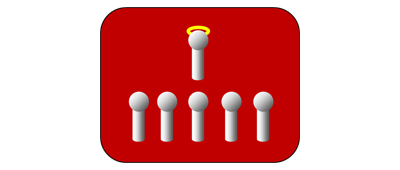
THEORY – Research shows
What type of leader results in a high performing team? It depends on your situation. A transformational and relational leadership approach has better performance outcomes in more research-based, knowledge-intensive and complex situations. A task-orientated approach has better outcomes in more routine situations.
APPLICATION – In a digital studio
Relationship, casting vision and empowering team members are critical when forming a project team or when working through complex problems. This is not the case when there is a time critical issue such as website being down or a schedule deadline, as the team requires a narrow task focus. The leadership challenge is to be able to switch back and forth between approaches, and to not have a studio that continuously operates from crisis to crisis, necessitating continuous task-mode.
As a leader, you may not be as important as you think. While a leader can play a critical role in organisational success, research places little emphasis on the value of the individual in the performance of the team. This leads us to the value of…
2. Self-managed teams
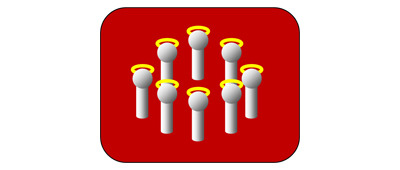
THEORY – Research shows
Self-managed teams use a form of distributed leadership, where aspects of the leader’s role such as authority, technical ability, charisma, and vision can be performed by team members. This allows members to focus on their strengths and bring efficiencies in communication.
Self managed teams can also be an excuse for lack of investment in management resources, as in the case of downsizing’s removal of middle management to place additional responsibilities on production staff. Similar to the leadership discussion, self-managed teams perform well in complex situations while centralised management can be preferred in time-specific performance outcomes.
APPLICATION – In a digital studio
As we have grown, we have placed greater emphasis both on the project management layer and on team self-management. The project manager plays a key role in coordinating tasks, scheduling resources, and communicating with all stakeholders. We have also legitimised authority to the team members for task definition, technical leadership, and delivery requirements.
Just keep in mind that self-managed does not mean you can get rid of your project managers. If you don’t have a project manager, your development staff will be doing the job. You will decrease your development staff productivity and have a low happiness factor for all involved, particularly the client. Remember, a good self managed team still needs…
3. Team role distribution
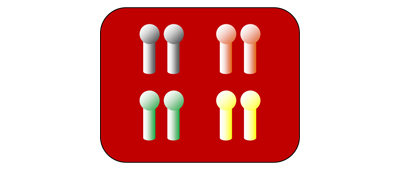
THEORY – Research shows
How a team will perform can be predicted based on having an appropriate spread of roles in the team. The concept of roles includes personality types, competencies, and the more structured Belbin team roles. While important, team roles have more of an impact on soft outcomes such as team member satisfaction, as compared to hard outcomes such as profitability or throughput.
This demonstrates that when push comes to shove, team members are able to operate outside of their roles and still produce results. It will likely be harder for them, however, and they will not be as happy doing it for the long term.
APPLICATION – In a digital studio
I know who in my team has attention to detail, who can catch and promote the vision, who is good with the client, and who can think strategically about the architecture of the solution. Where possible, we try to mix up experience for a continual mentoring process. We also invest in developing multi-disciplinary skill sets for each team member due to the continual fragmentation of the technology market.
Team role distribution is only possible, however, when you have balanced degree of…
4. Team diversity

THEORY – Research shows
Cultural and demographic diversity contributes to team performance only when the gap is neither too great nor too small. If there is not enough diversity, the team is at risk of low innovation and missing alternative viewpoints. Too large a gap and you will struggle with conflict. The diversity gap that can still yield performance is smaller the more complex and stressful the situation, as stress and complexity increases propensity for conflict.
APPLICATION – In a digital studio
We have been fortunate to secure cultural, personality, and demographic diversity. That said, there have been some instances where team members have not “fit”. Our capacity to accommodate differences has been exposed through high-pressure client situations, resulting in changing of team members for a given situation.
The challenge is to have enough diversity to foster new ideas and innovation but not so much that we are always dealing with conflict. Getting this mix right mean we get efficiencies through…
5. Shared cognition
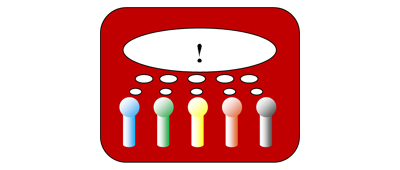
THEORY – Research shows
Teams will have higher outcomes when everyone on the team shares the same mental models and frameworks. These common approaches are institutionalised through practices, procedures, and cultural stories. Task performance benefits from more efficient communication, as less time is spent discussing routine activities or conceptual frameworks already agreed upon by team members.
APPLICATION – In a digital studio
We strike a balance between swapping staff between projects to maintain individual interest and keeping a team on one system to gain efficiencies. I know if I put five of my staff on a certain system, the project will move through the studio like a hot knife through butter. If I add a new team member to the system, I can add up to 20 percent additional time to explain what is already known by existing team members.
Fostering shared mental models is important to minimise the need for…
6. Conflict management
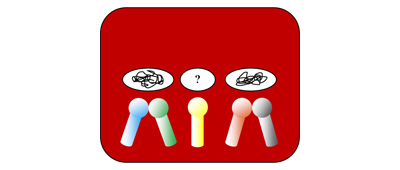
THEORY – Research shows
Conflict can be considered into two broad categories: task and relationship. Task conflict is a given and is likely to result in higher performance. Relationship conflict will always result in lower performance. Task conflict exposes relationship conflict, which then needs to be addressed to effectively overcome the task conflict.
APPLICATION – In a digital studio
Managing 50 projects for 35 clients across 26 staff, you are bound to get conflict. We anticipate conflict, and actively pursue development of internal processes to mitigate as much as possible the same conflict in the future. What we cannot tolerate is a lack of respect for each other, resulting in relationship conflict. When you find yourself saying things about a person you could not say to the person’s face, you are heading for trouble.
Relationship conflict makes task conflict almost impossible to resolve, as you are so focused on the person being the problem. One important way to minimise the amount of relationship conflict and keep a focus on task conflict is through…
7. Goal setting and performance management
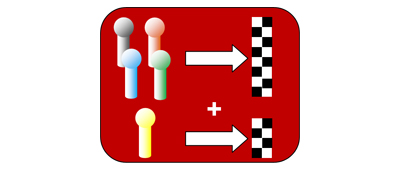
THEORY – Research shows
Performance management focuses on defining, setting, and providing feedback on goals. Research highlights the distinction between team and individual goals. Setting and providing feedback on individual goals to the individual rarely helps the team. Focusing goal setting and feedback of team goals to everyone on the team, however, consistently improves performance. The perfect fit is when individual and team goals align and support each other.
APPLICATION – In a digital studio
This is a priority area of focus for us. Goals currently relate to getting projects out in scope, on time, and on budget. Metrics are required so each individual knows their place in the project, and the team knows if they are achieving success. Feedback is being developed in the form of rewards that are both individual and team-based by department and by project.
Few companies do goal setting and performance management well, but I figure someone has to nail it so it may as well be us. A primary reason of failure of goal setting and performance management, along with the other factors of team performance, is a fundamental lack of…
8. Structure (high performance work systems)
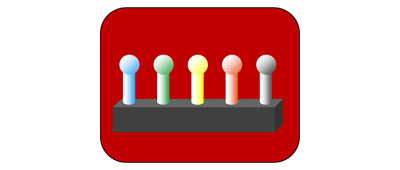
THEORY – Research shows
High performance work systems (HPWS) refer to the development of the most effective interactions between the human resources of the organisation and its technologies, processes and structure. The approach integrates any process related to staff management into the organisation’s strategic direction. Processes such as recruitment, training, and performance management are considered in every aspect of product and service delivery.
The application of HPWS needs to be holistic. Implementing HR systems such as HPWS can contribute as much as 15% to company profit, but only when it is applied vertically at all levels of management and horizontally across all functional areas. Picking and choosing which processes to consider has proven to result in a democratic deficit in workplace decision-making and a deterioration of working life quality.
APPLICATION – In a digital studio
In a digital studio, we are the sum of our staff. Our brand, processes and procedures have value only to the extent that they support and enable the incredible potential of our designers and developers. Unless HR systems are integrated with every aspect of service delivery, commercial profit pressures and client demands will be in conflict with staff development.
HR systems are critical to team performance. We achieve gains in part from the other seven factors. Unless those factors are systematised and integrated throughout the organisation, high team performance will not be sustainable or exist beyond the personalities of individual team members.

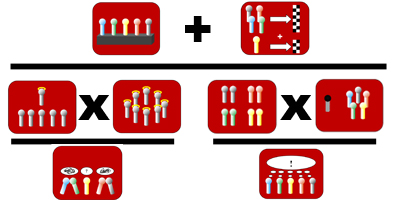
I like the pictures. Fun! Why do some “people” have halos?
Glad you like ’em. Couldn’t figure out how else to show a “leader”. 🙂